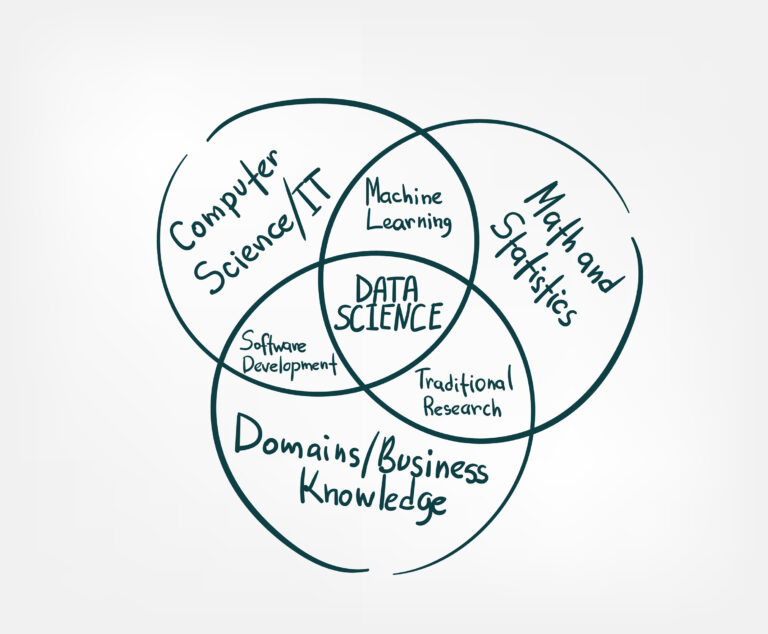As the web grows, more and more enterprises are now looking to SEO to help provide insights into how users interact with search engines and how they (and other sites) communicate autonomously.
This article highlights four trends and ways for Enterprise SEO marketers to stay ahead of change and the evolution of the web.
In a survey of CMOs in the United States, conducted in August 2021, 43% of respondents pointed to marketing technology, data, and analytics as their top priority for the upcoming 12 months.
The number of worldwide web users has risen to 4.5 billion, with over 2 billion websites now on the internet.
At the same time, the size of enterprise websites is growing as both marketers and machines, daily and hourly, add more pages of content, assets, and information
Ensuring your brand is discoverable by the right audience is becoming more competitive and complex.
On top of these challenges, concerns and opportunities are converging around:
- Web 3.0: The need to understand what decentralization of the web means as users begin to own their data and personalization rises in importance.
- Googles Page Experience and Core Web Vitals: The rise and importance of technical SEO and website infrastructure, content and speed
- The proliferation of search entry points: New search entry points from wearable, voice-activated devices, and mobile phones mean the next-generation market is expected to reach $55.7 billion by 2025.
- Data Privacy and Compliance: As initiatives grow around privacy, such as GDPR and the use of third-party data sources, marketers have to look to new ways to ensure data is high fidelity and secure.
According to Google’s John Muller:
“The best way to sum what is being pushed as the web3, in my opinion: it’s a way to store, access, and transfer some types of information, by using “public databases.”
SEO, as you know, is about making some information (like content or product listings) more accessible and easier to find online.
The web as you know it won’t change. You’ll still have search engines, marketplaces, social networks, e-commerce, etc. As long as there are search engines, there’ll be a need for SEO.”
Over recent years a crucial part of SEO was (and still should be) focused on how users interact with search engines.
However, as the web evolves, there is a need to understand how machines communicate with each other and how sites like Google and Facebook interact with websites.
Optimizing search experiences means understanding how humans and machines generate and process data.
Below are a few key areas to focus on to prepare for next-generation SEO.
Build Trustworthy Informational Infrastructures
The formidable growth of data means marketers now need to ensure their data sources are trustworthy and accurate.
Compliance around GDPR, CCPA, and privacy is becoming a major concern for organizations dealing with sensitive information, as referenced by CIO.com’s top eight priorities for 2022.
Security is a vital component of Enterprise-Grade SEO, ensuring your technologies are compliant now and in the future.
This protects you and your clients and users.
Read More On SEJ
Focus On Semantics
In 2001, Tim Berners-Lee (the founder of the internet) described the semantic web as a component of Web 3.0.
“The Semantic Web is not a separate Web but an extension of the current one, in which information is given well-defined meaning, better enabling computers and people to work in cooperation.”
Innovations in search technology centered around understanding the knowledge graph. Semantics are helping marketers better understand the relationships and meaning behind search queries.
Google uses Natural Language Processing (NLP) to help the search engine better understand and process queries – just as humans would.
In enterprise SEO, it is also helping enterprise SEO experts better understand the meaning behind searches and consumer wants and needs.
As machine-to-machine communication increases, it will also be essential to understand how they do this, what data it produces, and how to process it.
Leverage trustworthy technology and structured data sources and focus on key concepts like E-A-T to ensure your content matches intent and answers context between phrases and questions.
Read More On SEJ
Advance Your Understanding of Machine Learning And AI
As of 2021, in the state of Big Data And AI Executive Summary, among surveyed U.S. organizations, there was an overall focus toward driving innovation with data. Almost a third indicated active transformational business outcomes within their companies.
The application of NLP technology will be the driving force behind the next generation of SEO.
Embracing it is essential from data and information retrieval to website error detection and automation.
The human brain can only process so much data.
With the amount of data online to reach 175,000 zeta-bytes, processing becomes impossible.
Content writers and digital marketing experts are now tasked with a number one priority – understanding website-website communications – so they can update and make the necessary modifications to their website, search, and content marketing strategies.
Advanced technologies are self-learning and, in some cases, self-driving to help enterprise SEO professionals understand and process complex data.
They are assisting marketers to save valuable resources on mundane tasks, automate reporting, and fix critical errors on their website with zero-touch.
The intelligent use of marketing technology provides vital business intelligence and helps automate its execution.
Smart SEOs utilize this to improve business results and evolve their careers by elevating their role and learning new skills.
Read More On SEJ
Apply Data Insights Across Your Search And Martech Stack
Traditionally, SEO has relied on assumption-based best practices.
And it still does.
However, the application of Data science in search is becoming mission-critical.
This is especially true as website functionality and SEO needs become more advanced.
At the same time, search engines are getting more sophisticated in evaluating websites.
The result is a need to obtain, analyze, and extract insights from large datasets.
Particularly in an enterprise environment, SEOs draw heavily on data science methods and tools to process search data in a way to drive insights: Whether through statistical analysis, full API access to datasets, data processing algorithms designed for Big Data, or the freedom to experiment through how search data is collected.
However, with massive amounts of data, it makes no sense why marketers won’t use technology to streamline their SEO efforts.
 Image from Natata/Shutterstock, February 2022
Image from Natata/Shutterstock, February 2022When it comes to data science, SEO experts have a dilemma in choosing the right approach.
For example, they often ask themselves:
Should I use excel for my day-to-day work in processing data, or is it worth the pain to learn Python?
Would I produce better work by building my own interactive dashboards with R or Python, or should you just go with Google Data Studio?
Integrating Data Science modules into your technology stack can help enterprise SEOs, especially digital marketers, benefit from data science without having to become a data scientist – and without using resources to tackle the dilemmas outlined above.
Enterprise SEO platforms of tomorrow require the capabilities of data science infrastructure at the core of their martech stack to give marketers flexibility of options.
Read More On SEJ
3 Data Skill Sets You Need to Succeed in Data SEO
3 Types of Data Science SEO Teams and How They Work
Conclusion
As the web – and the breadth and depth of human connection inside of it – evolves, the value of search data as a proxy for the real-time voice of the customer will continue to grow.
For Enterprise SEO, unlocking that potential requires an increasing focus on technology, but it cannot be at the expense of the thoughtful, creative thinking that drives exceptional customer experiences.
That balance between data science, creativity, and the humanization of AI-generated touchpoints is an essential component of any marketing strategy built to withstand this next era of the growth of the web.
More resources:
Featured Image: Olivier Le Moal/Shutterstock
